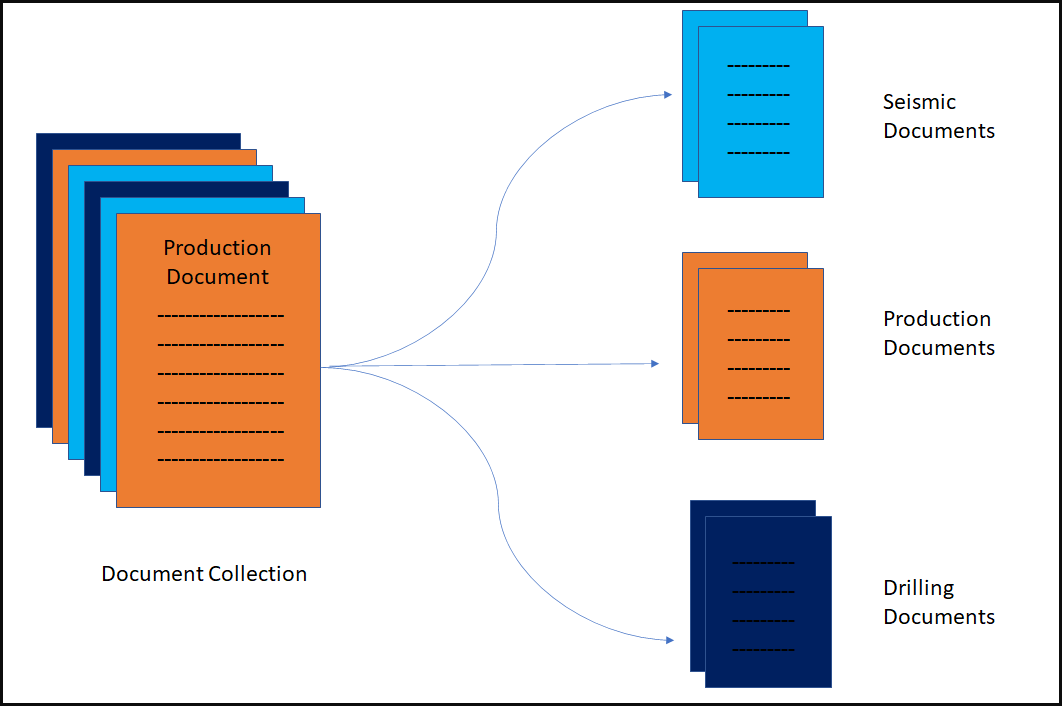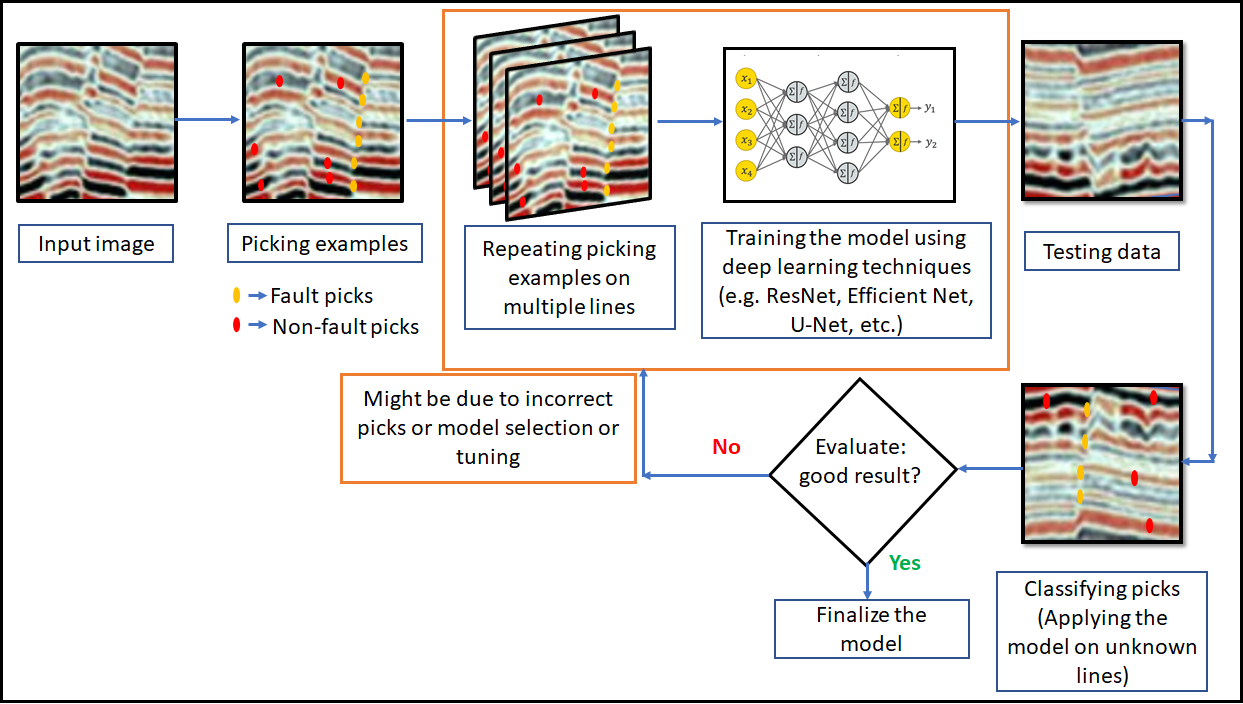Unlocking the Transformational Power of AI in the O&G Industry
Artificial Intelligence (AI) and Machine Learning (ML) are reshaping the Oil and Gas (O&G) industry. AI and ML can reduce operational risks, minimize costs, and improve efficiency in the sector. These technologies transform existing data into valuable assets with insights that enable more effective decision-making.
The industry faces numerous challenges when applying ML/Deep Learning (DL) methods, including the large data size as a prerequisite. ML and DL rely on learning from data, which requires broad access to extensive volumes of historical data. However, data discovery is a significant challenge due to data silos and the need for more computational resources to train advanced ML/DL models with O&G data. Fortunately, adopting Open Subsurface Data Universe (OSDU) can effectively overcome many of these challenges.
In the following sections, we discuss the various advanced ML and DL methods, those can help in unlocking transformational power in O&G industry.
Data preprocessing
Cleaning and standardizing the data is crucial in solving any ML or DL problem. Machine Learning engineers spend the majority of their time dedicated to this process. If the input data fed to ML or DL algorithms are not of superior quality, no matter how robust the model is, it cannot generate a usable or accurate output. For ML, replacing missing values, removing duplicate or unwanted values, handling categorical data, and standardizing/scaling data are key steps before selecting the input features for the ML model. In DL, data augmentation plays a vital role as a preprocessing step. The training and testing datasets must be randomly selected to prevent bias, and both datasets should accurately represent the original dataset.
Unlocking unstructured data with NLP
Approximately 70 to 80% of all existing data today is believed to be unstructured, while the remaining is structured. This estimation is also applicable to the O&G industry. Operators can use Natural Language Processing (NLP) to unlock the potential of unstructured data.
Advancements in DL algorithms have enabled the accurate, efficient, and robust resolution of various NLP problems that were previously difficult to solve. The following business use cases demonstrate NLP’s application in the industry:
- Multilingual NLP language translation for documents
- Metadata extraction from exploration and production documents, such as invoices, reports, agreements, and manuals, to extract valuable information in the form of metadata
- Document clustering for grouping documents belonging to various divisions of the O&G industry into subsets or clusters. Earlier clustering techniques, such as k-means clustering, required dimensionality reduction if there were more input features, but recent DL advancements can extract syntactically and semantically meaningful features. These enable advanced clustering methods with contextualized representations.

Fig 1: Document clustering that groups various documents according to their type
Seismic imaging
Seismic data provides invaluable information for interpreting subsurface structures, stratigraphy, and reservoir properties. As time progresses, the complexity of the explored reservoirs continues to increase, and interpretation of these complex datasets requires highly experienced interpreters and an enormous amount of time. For picking faults, chimneys, and horizons, rigorous manual effort is necessary, and managing quality for these is a very time-consuming process.
Operators can employ DL techniques to perform tasks such as fault picking, horizon picking, classification, and segmentation of seismic images. They can also use DL to create synthetic data and Convolutional Neural Networks (CNNs), and their various architectures, such as U-Nets, for seismic image-related interpretation. Deep CNN training necessitates extensive data and computational resources, making transfer learning a viable option for similar problems. It is a method of making predictions on a dataset using knowledge developed from another larger dataset. Transfer learning facilitates understanding a new task by transferring knowledge from a previously learned related task. While various CNN architectures and their models are readily available, they may require customization, such as adjusting the number of target labels, depending on the task. The well-known CNN architectures are ResNet and EfficientNet. Figure 2 demonstrates how CNNs can help classify fault and non-fault data. The same approach can be applied to classify salt and non-salt bodies.

Fig 2: Classifying the seismic images into fault and non-fault by using deep learning
Autoencoders
Autoencoders are artificial neural networks that take the input and produce an output of the same nature. It involves compressing the input into a lower-dimensional code and using the code representation to then reconstruct the output. This input compression is also known as latent-space representation.
Autoencoders are unsupervised learning techniques with multiple variations, including:
- Denoising autoencoder: Image denoising is one of the applications where the autoencoders reconstruct the noiseless image from a noisy input image. This type of autoencoder can remove the random noise from seismic images. A denoising autoencoder can also fill in the missing values in the dataset.
- Sparse autoencoder: This autoencoder limits only a few hidden neurons to be active. Hence, this property is called sparsity. It uses regularization to enforce sparsity.
- Variational autoencoder: The variational autoencoder learns the probability distribution parameters for input data modeling instead of learning an arbitrary function in the case of other autoencoders.
Deep learning for forecasting
There are various methods for time series forecasting, but advanced time series forecasting methods based on DL have outperformed traditional forecasting methods. One such method is Temporal Fusion Transformer (TFT), a deep neural network utilizing attention mechanisms designed to achieve high levels of performance and interpretability. Leveraging TFT can provide better prediction or forecasting rates.
Machine learning in well drilling operations
ML techniques can help to predict the Rate of Penetration (ROP), Differential Pipe Sticking (DPS), drill string vibration, lost circulation, and gas-influx detection, among other drilling events. In most cases, operators use the Artificial Neural Network (ANN) approach. Support Vector Machines (SVM) is another approach used widely in the industry.
Explainable AI
Explainable AI (XAI) comprises a range of tools and methods that facilitate the comprehension, explanation, and visualization of predictions generated by ML models. As AI becomes more sophisticated, the black-box nature of ML and DL algorithms can hinder the reasoning of how the input data and output are connected. XAI serves to clarify the logic behind the predictions, benefitting not only geoscientists and end-users but also improving the interpretability for humans. XAI also enhances the transparency of models, bolstering operators’ confidence in deploying them.
Other methods and applications
In addition to the methods already discussed here, ML can be applied in various workflows, including:
1) Using Generative Adversarial Networks (GAN) to augment image data and create synthetic data, aiding reservoir modeling and simulation studies.
2) Implementing gated recurrent neural networks to predict the performance of oilfield development and simultaneously forecast multiple physical parameters, such as porosity and water saturation.
3) Utilizing boosting techniques for predicting missing well logs and lithological features.
Challenges
Adopting AI (ML/DL) in the O&G industry has its challenges, such as:
1) Moving to the AI domain demands much effort and investment in upgrading the existing geoscientists/engineers.
2) Even though there is a large amount of data in the O&G industry, if the data quality is low or less accurate, it is challenging to train ML and DL models. To remove model bias, enough relevant data should be used for training the models.
3) Deep learning-based workflows require vast amounts of space and computing power, which can be a challenge for training the models
Conclusion
The technology landscape has witnessed remarkable ML advancements in recent years. However, not all methods can be directly applied to solving problems in the O&G industry. Customization of existing solutions is required to leverage the technology fully. Using the advanced ML solutions can help companies reduce exploration costs and time, thereby increasing their profits. As multiple AI and ML solutions have emerged, emphasis is given to simple, memory and time-efficient methods. In the coming years, the success of ML models will depend on their accuracy, explainability, and interpretability.
References:
Seismic labeled data expansion using variational autoencoders
(https://www.sciencedirect.com/science/article/pii/S2666544120300034)
Frontiers | Simultaneous prediction of multiple physical parameters using gated recurrent neural network: Porosity, water saturation, shale content
(https://www.frontiersin.org/articles/10.3389/feart.2022.984589/full)
A Deep Learning Framework Using Graph Convolutional Networks for Adaptive Correction of Interwell Connectivity and Gated Recurrent Unit for Performance Prediction
Applied Deep Learning – Part 3: Autoencoders | by Arden Dertat
(https://towardsdatascience.com/applied-deep-learning-part-3-autoencoders-1c083af4d798)
Machine learning for drilling applications: A review
(https://www.sciencedirect.com/science/article/abs/pii/S1875510022003936)
Latest Blogs
A closer look at Kimi K2 Thinking, an open agentic model that pushes autonomy, security, and…
We live in an era where data drives every strategic shift, fuels every decision, and informs…
The Evolution of Third-Party Risk: When Trust Meets Technology Not long ago, third-party risk…
Today, media and entertainment are changing quickly. The combination of artificial intelligence,…




